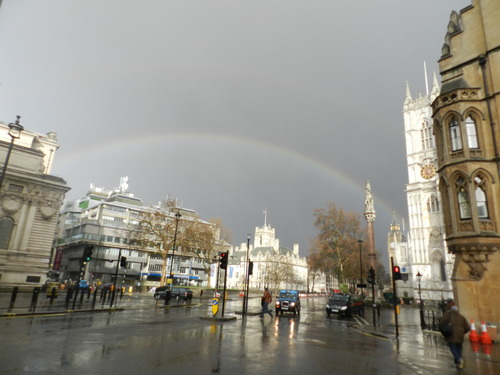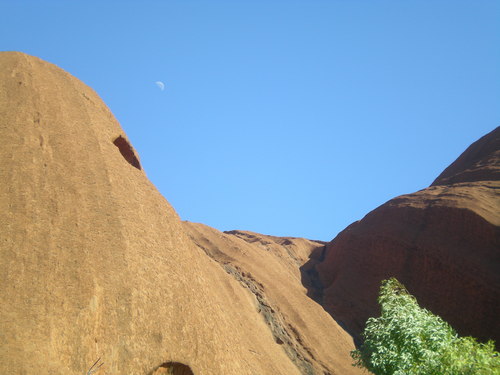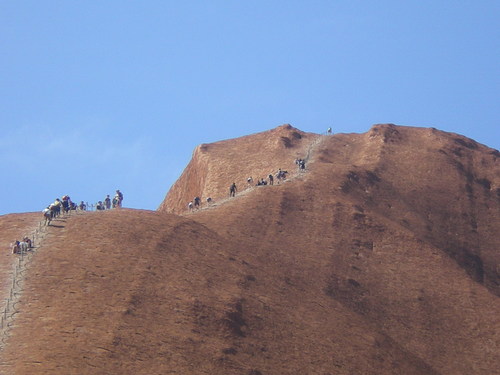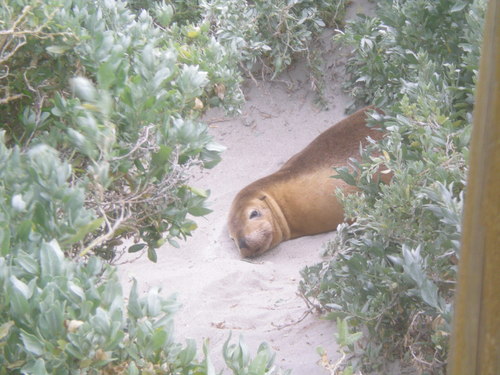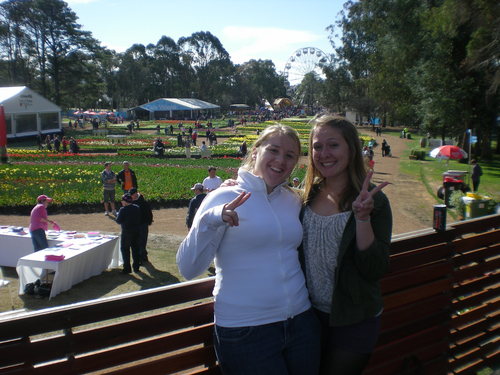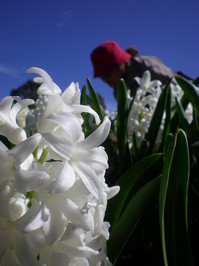Hi everyone!
Recently I went on a ten-day adventure for ANU’s two week break at the beginning of October. The first morning, I caught a cab and went to the airport. Destination: Ayers Rock. Looking out the window of the plane, the ground was the stererotypical red, looking barren and dry as ever. Ayers Rock is a rather odd place. It’s completely touristy — no one who isn’t a tourist is there except for resort staff. I got the feeling that most people go there just for the sake of saying they’ve been, not necessarily for an interest in the place (particularly for the Aussies). There were people from all over the world and Australia at this one “mega-resort” catering to all budgets.
Throughout my 48 hours spent in this remote area, I saw Uluru at sunset, sunrise, and during the day, from up close to far far away. Neat, yes, but I think the most interesting part was reading the story behind the rock as told by the Aborigines. Looking in to this kind of history (which Australia is lacking compared to most countries…) is invaluable and I think more locals need to absorb the information provided to them.
One case in point — climbing Uluru. There’s one path that leads up the rock to a point on the top. It’s incredibly steep and is definitely seen as a challenge to those who desire to trek up it. However, there’s the moral issue that most people rarely consider. The path that is now open to the public to walk up was the original path for Aboriginal men to climb for sacred purposes. There is a sign at the start of the walk stating that fact, plus more information on it, and asking visitors to please respect their heritage and not climb. How many people did I see actually study that sign and turn away after doing so? None. Zip. Zero. It was quite eye-opening and left a bitter taste in my mouth. National and international visitors should be much more considerate about the ancient culture that stands behind tourist attractions.
Regardless, below are a few pictures of Uluru with the Olgas (Kata Tjuta) in the background and other pictures of the Australia Outback.
Next on my places to go was Alice Springs. As Bill Bryson implied, it’s a bit odd to see how a town in the middle of nowhere has changed to fit the desires and perceptions of tourists coming in who wish to see what life is like in the middle of nowhere. Needless to say, it’s not nearly as limited as it used to be. Can’t say it was the most exciting place, but the markets on Sunday were great! From here, I took the famed Ghan train down to Adelaide. It is roughly a twenty-hour journey but doesn’t feel nearly as long because of the overnight portion. I had the pleasure of sitting next to a Canadian on a two-month long solo exploration. It was nice to reminisce about snow and cold with someone who was also enjoying backwards change of seasons so famed in Australia. Sadly, sleeping did not come as easily as I’d hoped and I ended up befriending the night manager in the dining car while I did some homework for one of my courses.
Once in Adelaide, I had a look around and walked back a big music festival called Parklife. Seemed like a fun time and I wish I had gone! But Australia seems quite big on festivals and gigs so I’m bound to get to one pretty soon. Met up with some friends from England and drove out to Kangaroo Island. Absolutely phenomenal place. There was so much wildlife — echidnas, kangaroos, wallabies, penguins, pelicans, seals, koalas. It was incredible! The water was a Caribbean-style blue and was (barely) warm enough for a dip. Definitely put this on your list of places to go! Waking up in the morning with kangaroos and their joeys chilling out nearby won’t happen just anywhere…
Below are a few pictures of the island:
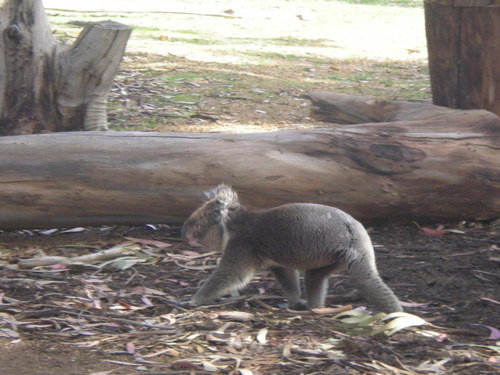
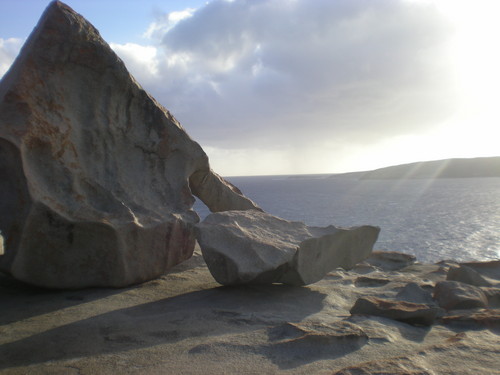

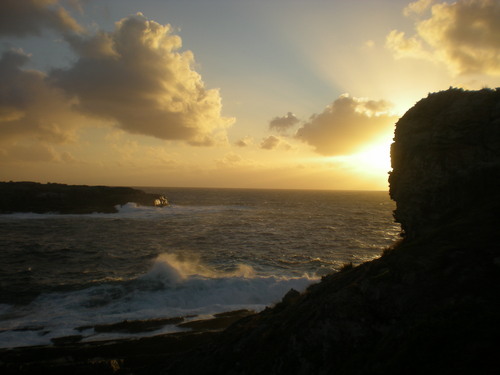 The third picture is at the Remarkable Rocks…quite remarkable indeed! The fourth is at Admiral’s Arch, also a nice area, filled with seals and a gorgeous sunset.
The third picture is at the Remarkable Rocks…quite remarkable indeed! The fourth is at Admiral’s Arch, also a nice area, filled with seals and a gorgeous sunset.
That’s all for now. Until next time!
Location: Ayers Rock, Australia


